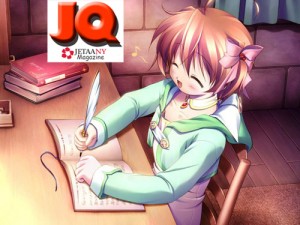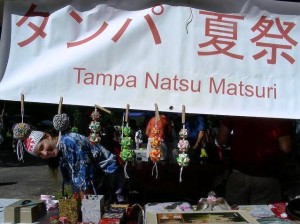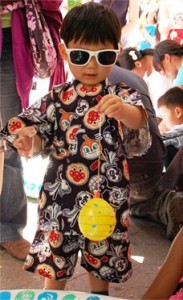JQ Magazine: Book Review – ‘Monkey Business Volume 2’
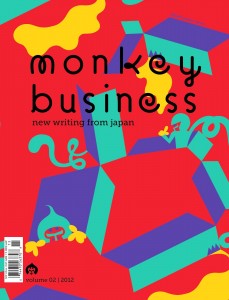
“Anyone can read this book and appreciate it. It provides a window into the heart, mind, and soul of the Japanese people following the tsunami, earthquake and nuclear disaster.” (A Public Space)
By Greg Anderson, (Fukuoka-ken, 1990-1992) for JQ magazine. Greg is part of the fourth class of the JET Program, which began in 1987. He is currently employed as an auditor with the U.S. Treasury Department and is a new member of the JETAA New York book club.
Monkey Business: New Writing from Japan is an anthology of opinions, thoughts, and stories written by some of the most prominent writers from the past and present on the subject of Japan and co-edited by Japanamerica author Roland Kelts (Osaka-shi, 1998-99). I love this book!
Why? Because anyone can read this book and appreciate it. You do not have to be an aficionado of Japan or, frankly, be able to locate it on a map. This book provides a window into the heart, mind, and soul of the Japanese people following the tsunami, earthquake and nuclear disaster. Just as in the United States following the events of September 11, 2001, Americans were forced to pause and consider American values, the American way of life and America’s relationship with rest of the world, along with what it means to be an American.
The events of March 11, 2011 were a watershed moment for the people of Japan. Nothing will ever be as it once was in Japan. The loss of life, failed technology, and deceit/lies are themes that are all addressed in this issue of Monkey Business, released earlier this year. What’s great about this book is that there are two ways that it can be read: You can read it chronologically from page one through page 210, you can browse the index to find an interesting story, or you can simply thumb through the book (like I did), find a story that strikes your fancy, and begin reading (I assure you that you will not be disappointed).
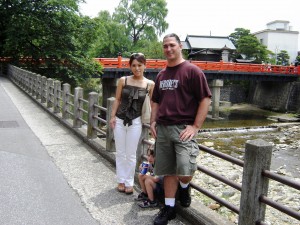 By John McGee (Nagano-ken, 2004-05) for JQ magazine. John is the Tampa Regional Representative for the Florida JET Alumni Association, and the founder of Tampa Natsu Matsuri, a free annual event organized by local residents with an interest in Japan.
By John McGee (Nagano-ken, 2004-05) for JQ magazine. John is the Tampa Regional Representative for the Florida JET Alumni Association, and the founder of Tampa Natsu Matsuri, a free annual event organized by local residents with an interest in Japan.
The balmy breeze blew in through the screened doors of our house, floating the sheer curtains in soft billows. Late May in southern Nagano is damp…it’s always damp on the wet side of the Alps. But being from Florida, this was comfortable weather.
My good friend was visiting from America. He’d made quite a stir in our sleepy town striding around with his seemingly angry Native American scowl way up there brushing two meters, from which nearly a meter of black tresses flowed down like raven waterfalls.
We were watching the shadows slip up the mountains across from our home when the phone rang. It was our friend Sayaka. “The fireflies are here!” she said excitedly. “Want to come see them?”
Sure we would. If they were as big as other Japanese bugs, this could be a great sight. She told us where to meet her, so we carefully folded my wife, my three-year-old son, our giant Indian friend Bass, short for Sebastian, and myself into our Toppo and sputtered down our ski jump of a street to the main road.
We soon pulled up to the intersection where Sayaka was waiting. This miniaturized beauty stood out in our town every bit as much as Bass. She was dressed to kill as always, standing next to her shiny new Cube. Her family owned a ryokan and she had been all over the world. She quickly waved us to get going and we followed her down out of our crevice of a valley into the wider spot where a smaller river joined the local Kiso River, forming a rare broad flat spot.
This area was checkered with small rice fields and ancient farm houses. As we neared the junction of the rivers I started to see quite a few cars. I was a bit surprised, but that quickly turned into open-mouthed shock as we saw that there was not one available place to pull off the road for nearly a kilometer! Lightning bugs were apparently a big attraction in this sleepy town. Sayaka spotted a driveway open at a farmhouse and told us she’d ask if we could park there. “That’ll never work,” I thought, but of course this was Japan, so in a moment we were parked in the best spot on the field.
We stepped out into a dusky green sward dotted with families. Children hopping here and there. Some had jars. Others had nets. Some just walked along with heads back and mouths agape. Against the black silhouettes of the steep mountains there were literally thousands upon thousands of small bright lights flashing as high up as I could see. In answer, the rice and grasses along the river were twinkling like Christmas lights.
JQ Magazine: JQ&A with Darryl Wharton-Rigby on ‘Don Doko Don: The Yamakiya Taiko Drum Club Project’
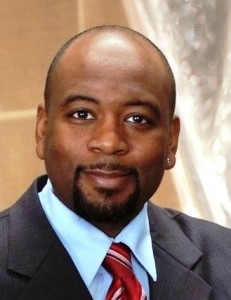
“This story is about the resiliency of community; how a community comes together in times of crisis. It’s a story about our shared human experience. It’s in some ways my own story, as my family still lives in Fukushima as well.”
By Nichole L. Knight (Shiga-ken, 2007-09) for JQ magazine. Originally from Waterbury, Connecticut, Nichole became active with the JET Alumni Association of New York even before moving to the city. Since returning from Japan, she’s played with the University of Connecticut Taiko Team, and trained with Soh Daiko, the East Coast’s oldest taiko group.
Darryl Wharton-Rigby (Fukushima-ken, 2005-07) is a playwright, poet, professor and filmmaker, who hails from Baltimore, Maryland. He has written for NBC, MTV, and BET. He lectures for Morgan State University’s Screenwriting and Animation Program, and is in the process of writing three books. Married with three children, he splits his time between Baltimore, Los Angeles, and Japan.
From 2005 to 2007, while teaching English in Kawamata-machi in Fukushima Prefecture through the JET Program, Wharton-Rigby was introduced to the talented members of the Yamakiya Taiko Club, a local community group which he would soon join. He began filming their story in 2006, but was inspired to continue after the group was misplaced in the aftermath of the 2011 tsunami and ensuing Fukushima Dai-Ichi Nuclear Power Plant area evacuations.
Of the documentary, now titled Don Doko Don: The Yamakiya Taiko Drum Club Project, Wharton-Rigby says, “…[T]his very well may be my most ambitious project. I never imagined my journey would bring me to [a] project with such an international scope and [is] profoundly personal on so many levels.” As the film’s writer, director and producer, he has unveiled an ambitious Kickstarter campaign to fund the project that closes July 11. In this exclusive interview, JQ caught up with Wharton-Rigby to discuss the origins of the film, the significance of Yamakiya on its devastated community, and the troupe’s international highlights so far.
Tell us a little about the Yamakiya Taiko Club and how you first came to know about it.
When I was a JET in Kawamata, I had to go to the Yamakiya District high in the mountains to teach at the elementary, junior high, and kindergarten schools. I met Megumi Endo, who was a school worker and head of the group at Yamakiya Elementary School. She invited me to play taiko drums with the Yamakiya Taiko Club and I was hooked. I loved the sound and power of the drums. There are three teams: Kodama, the beginning students; Suzaku, the intermediate students; and Yamazaru, the experienced members. I practiced with the younger members of Kodoma.
What inspired you to start making a documentary about them?
I started shooting footage of the group after breaking my finger. I couldn’t play the drums, but I still wanted to remain connected to the group. My background prior to JET was in film, so, I pulled out my camera and started shooting footage of the group. I would shoot rehearsals, performances, meetings, and on bus trips. I even followed around Genki Endo, who is the leader of the group. Megumi-san mentioned that it would be great to have a documentary about the group. I agreed. She came up with the title Don Doko Don—it’s the basic sound of the taiko beat. Over the years, I had compiled more than 80 hours of footage and when I would return to Japan, I would make sure to visit Yamakiya and I would bring along my camera and shoot more footage.
Why is it important to share this story with the world?
When I learned that Yamakiya was going to be evacuated because of high levels of radiation after the events of March 11, 2011, it broke my heart. I could not fathom this was really happening to a community and people I adored. Then I found out that despite the circumstances, the group was still practicing and performing together. I knew there was a story to be told. This story is about the resiliency of community; how a community comes together in times of crisis. It’s a story about our shared human experience. It’s in some ways my own story, as my family still lives in Fukushima as well.
JQ Magazine: In Texas, Metroplex Lolitas Paint the Town
By Jen Wang (Miyagi-ken, 2008-09) for JQ magazine. Jen is a research technician from Dallas who also writes for Purple SKY, a Japanese music website. Her love of cosplay and her junior high school students inspired the name for her own Japanese pop culture blog, Hibari-sensei’s Classroom.
The Japanese fashion subculture Lolita is based on Victorian and Rococo aesthetics. Its trademark look consists of a blouse, a knee-length skirt or jumper, a petticoat, stockings, and Mary Janes or platform shoes. Since its inception in the 1970s, Lolita has developed several sub-styles: gothic, sweet, classic, punk and more. There is also a mature variation known as aristocrat and a masculine equivalent known as ouji.
Although I had been interested in Lolita since college, I didn’t really start compiling a Lolita wardrobe until I was a JET. It was easier to figure out what styles worked when you could try on the clothes. I visited the seventh floor of Sendai Forus—the location of punk, gothic and Lolita stores—so frequently that the shopkeepers started to recognize me. The budding fashionista in me missed the shopping trips and opportunities to dress up once I returned to the U.S. Then I discovered the Metroplex Lolita LiveJournal group.
The Metroplex Lolitas are a group of from the Dallas-Fort Worth area. Prior to their creation in January 2010, several of the girls had been arranging meet-ups through another group, Texas Lolis. They decided to branch off to encourage more conversation and gatherings.
My first meet-up was in March 2010. We went to watch Tim Burton’s Alice in Wonderland and sat down for tea and a gift-exchange afterwards. The Metroplex Lolitas meet around once a month to enjoy a meal—true to our Victorian influences, we do love tea and pastries—or an activity, which can be anything from a trip to the museum to ice skating. The Texas heat has never deterred us from getting together in our layers of frills since many members have come up with more summer-friendly outfits. We also host meet-ups with out-of-town Lolitas at anime conventions.
JQ Magazine Seeks Writers for Summer 2012!
As we slide into summer, JETAA New York’s JQ magazine continues to provide content with an ever-expanding array of articles, interviews and features (see our recent stories here). We’re now looking for new writers, including recent returnees and JET vets, from all JETAA chapters worldwide for posting stories via our host at the global JET alumni resource site JETwit.com. (Scribes are also encouraged to join the JET Alumni Writers group on LinkedIn.)
Below are story ideas grouped by JET participants and alumni (JET World) and those more on Japanese culture (Japan World). And if you’re a JET or JETWit contributor from anywhere in the world with a story idea of your own, let us know!
Click “Read More” below for our summer 2012 ideas pitch package, and contact JQ editor Justin Tedaldi (magazine [at] jetaany [dot] org) to sign up for stories.
JQ Magazine: JQ&A with Mark Flanigan, Program Director of the Japan ICU Foundation

Mark Flanigan volunteering with local fisherman for tsunami relief during Golden Week in Oshika Hanto, Ishinomaki, 2011.
By Shirley Dang (Yamanashi-ken, 2009-10) for JQ magazine. Shirley enjoys sipping chai latte and devouring scrumptious cakes while continuing her pursuit for Japanese- and education-related jobs. Visit her Facebook page here.
Mark Flanigan (Nagasaki-ken, 2000-04) currently lives on the campus of International Christian University (ICU) / 国際基督教大学 in Tokyo, where he is finishing up his two-year M.A. in peace studies as a Rotary International Peace Fellow. Last year he volunteered at Ishinomaki post-3/11, playing a vital role in tsunami relief. Following graduation, Mark will move to New York City in July to work as a new program director with the Japan ICU Foundation (JICUF). JQ recently caught up with him to learn more about his extraordinary experiences.
Hi, Mark, welcome to the Big Apple! What’s your background story and how did it influence you to be a JET?
Thank you, Shirley! I’m glad to have the chance to introduce myself here. Well, I actually came into JET through my interest in teaching, rather than a specific focus on Japan. I wasn’t an Asian studies major in college, and I had never traveled anywhere except Europe and the Americas at that point. My first direct experience with Teaching English as a Foreign Language (TEFL) was spending about a year in Morelia, Mexico, which I really loved. After I returned to the U.S., I taught English at an international school for a while, but I wanted to experience the feeling of living in a different culture again. That led me to apply to JET, and I was lucky to have some great advice and support from both Japanese people and JET alumni living in D.C. I still remember how happy I felt when I received the acceptance letter in the mail!
What was your time on JET like, and how did it play a role in your future career plans?
My original plan, like many JETs, was to stay just one year. I had applied to grad school and thought I would finish up with my original contract. Needless to say, I became quite fascinated with the people and culture I found as a municipal ALT in Hirado, Nagasaki Prefecture, and decided to re-contract. I was then offered a promotion of sorts, and became the Teacher-Trainer ALT at the Prefectural Education Center, which was a great experience. In my last year, I also served in tandem with my other duties as the Nagasaki Prefectural ALT Advisor. In all, I ended up staying in Nagasaki for a total of four years! After that, I returned to D.C. and attended grad school in Public Policy at George Mason University. I was selected as a Presidential Management Fellow and worked for the U.S. government until 2010.
I see that you were a Rotary Peace Fellow at the ICU in Tokyo—how did that happen? And as a fellow, what were your roles and responsibilities? Anything you want to share?
I was very fortunate to have met Daniel Sturgeon (Gifu-ken, 2000-02), a JET alumnus and former Rotary Peace Fellow, in Washington. He and I shared many similar interests regarding public service and international exchange, and he strongly encouraged me to pursue the Rotary Peace Fellowship. As ICU in Tokyo is one of the partner universities with Rotary for administering the Peace Fellowship, it was a perfect way for me to return once more to Japan.
Daniel was absolutely instrumental in helping me prepare for the application and selection process, which is certainly rigorous, but very much worth the time and effort. In two years, I was able to graduate with a fully-funded M.A. in Peace Studies, with direct experience interning at the United Nations in Geneva in summer 2011, thanks to the generosity of Rotarians worldwide who enable this outstanding Peace Fellowship program to develop.
I would certainly encourage any former JETs who are interested to review the current application at www.rotary.org/rotarycenters. Being a JET means you have already experienced Japanese culture directly, which is a huge plus with Rotary! You can also find a local Rotary Club for endorsement at www.rotary.org/clublocator. The annual application deadline is coming up, so if you are interested, apply ASAP!
JQ Magazine: Book Review – ‘Shiro’ and ‘Otaku Spaces’
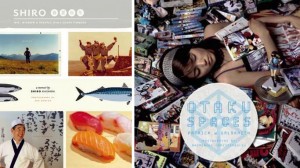
“‘Shiro: Wit, Wisdom and Recipes from a Sushi Pioneer’ and ‘Otaku Spaces’ are enjoyable reads for raw fish enthusiasts and confessed Japanophiles of all ages!” (Chin Music Press)
By Preston Hatfield (Yamanashi-ken, 2009-10) for JQ magazine. Preston moved from San Francisco to New York City in January 2012 and is now accepting submissions from people who want to be his friend. Abduct him from his house in the middle of the night, or find him on Facebook and ask about his JET blog in which he details his exploits and misadventures in that crazy Land of the Rising Sun we all love.
This month, JQ takes a moment to showcase two ambitious literary works and the indie press that brought them to print. As a writer with experience in book publishing evaluating and responding to a variety of unsolicited book proposals (we refer to this as the business of crushing dreams), I have been given the privilege of reviewing these works. Therefore, in consideration for readers who won’t read beyond this paragraph, I’ll begin with a sound bite endorsement: “Shiro: Wit, Wisdom and Recipes from a Sushi Pioneer and Otaku Spaces (published by Chin Music Press in 2011 and 2012, respectively) are enjoyable reads for raw fish enthusiasts and confessed Japanophiles of all ages!” —Preston Hatfield
Shiro is the autobiographical account of Shiro Kashiba, the “Godfather of Seattle Sushi” who first introduced the cuisine to the Emerald City in 1966. His story is one of passion, that inspirational drive that likens a man to a salmon swimming upstream—tireless, blind to distraction, and staunchly determined to reach his destination. It guides him, from his childhood home in Kyoto to his first apprenticeship in a sushi restaurant in Ginza, and eventually, to Seattle, where he now continues to perform and perfect his trade in his own restaurant.
His passion transcends mere desire to practice the honored tradition of Edomae sushi—a tradition whose authenticity he strives to preserve despite America’s penchant for fusion rolls and sauces than are anything but canon—and, indeed, finds its footing in the very earth that lavishes the bounty of ingredients he handpicks to make his exquisite, culinary triumphs. An avid hiker and environmentalist, Shiro is perhaps concerned less about the food than he is in urging people to treasure and protect our natural resources, particularly Puget Sound in the Pacific Northwest.
While the narrative and style do not always do Shiro’s experiences justice (he is a renowned chef, after all, and not a writer), they do give a concise and linear account of Shiro’s life, and an overview of the challenges he faced every step of the way. With simple language, a humble tone, and a professional’s knowledge and insight, Shiro holds his reader’s attention throughout the book, leading them at a surprisingly brisk pace. This pace, while gratifying in its ability to usher us through Shiro’s Greatest Hits, does not allow for very as many sensory details and anecdotal detours as some readers might prefer.
JQ Magazine: App Review – Japanese Flash and Rikai Browser
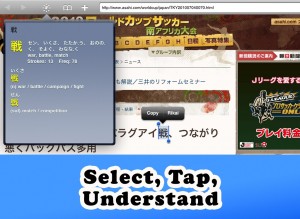
"The best study materials are ones that are easy to pick up and make a habit of using. It’s also important that they’re easy to use after being neglected for a while. Both Japanese Flash and Rikai Browser pass that test." (Courtesy of Long Weekend LLC)
By Jarrad Skinner (Toyama-ken, 2007-2011) for JQ magazine. Jarrad is a game design student. He’s rediscovering New York by going to lectures, comedy shows, meetups, concerts, bars, restaurants, and by skipping subway rides for long walks whenever possible. You can find him sleeping on the LIRR.
It’s June. That means six months until the Japanese-Language Proficiency Test in December, so it’s a good time to take a look at goals and study materials and get crackin’. Long Weekend LLC has two iOS apps, Japanese Flash and the Rikai Browser, which may help.
JET alum Mark Makdad (Toyama-ken, 2005-06), Long Weekend’s director and co-founder, explains what sets their apps apart: “We took the dictionary approach but added on two important things: an SRS algorithm to show you words you’d already looked up and saved to a custom set, and 150+ sets of useful and/or interesting words pre-loaded so people can just study vocabulary relevant to their situation,” he says. “For example, there’s a ‘Drinking Words’ set–if you’re going out to an izakaya with Japanese friends for the first time, you’ll probably want to learn a few ahead of time!”
Learning Japanese has become much easier in the past five years. When I started JET in 2007 and began studying Japanese, I used a ragtag paper pocket dictionary that my predecessor had left on my desk. It got me through a lot but not without a lot of tedious fumbling, and I was envious of my fellow JETs with their fancy electronic dictionaries. Those fancy electronic dictionaries are really expensive, though. It wasn’t until the middle of my third year on JET that I upgraded from my not-so-sturdy pocket dictionary. I had gotten an iPhone and immediately put the free dictionary Kotoba! on it. This was not a minor thing, but a cause of a marked improvement in my quality of life as a JET.
Not only was I more willing to jump into Japanese conversations because I knew I could quickly look up a key word if I needed to, but students and teachers were more willing to try to talk with me and have deeper conversations because they knew the dictionary app was right there to help them, too. Never having to learn how to look up kanji by stroke order in a paper dictionary was also appreciated.
By John McGee (Nagano-ken, 2004-05) for JQ magazine. John is the Tampa Regional Representative for the Florida JET Alumni Association, and the founder of Tampa Natsu Matsuri, a free annual event organized by local residents with an interest in Japan.
It’s a familiar story: apply to JET for one of several reasons, go to Japan and find a second home, return to the U.S., and…well, that’s where it all falls apart, right? Most of us come back intent to keep our newfound hybrid culture alive, but few areas in the U.S. have profound Japanese cultural presence. So we sigh with natsukashii pangs when we can’t take our beer out of the bar, we hang out with JETs on occasion, download the odd drama, and let the rest of our lives go back to American normal, like it or not.
That was certainly the case for me here in Tampa. There’s a bit of Asian presence: restaurants, markets, a festival, even a karaoke place, mostly all Korean or Chinese. But I’ve never been content with the status quo. (I know; how did I survive in we-do-it-this-way-because-that’s-how-it’s-done Japan, right?) So I started probing some contacts at the university, searching the Internet for related local topics; I even knew some Japanese nationals living here.
I discovered that the area actually has quite a bit of Japanese culture…it’s just hiding. Turns out the people are hiding, too. There’s a whole thriving subculture in the region made up mostly of Japanese women who have married American men. But there’s also martial and cultural arts, anime clubs, language groups, and we even have a pack of strangely elusive diehard Loli girls. The problem wasn’t that we didn’t have the culture; it was that it was so diffuse and cloistered.
About the time I was figuring all this out, a JET friend suggested we have a natsu matsuri party, just to reminisce and eat some suika in the sweltering Florida heat. That’s when a light bulb came on and I realized, “what better way to draw those groups together than to have a real natsu matsuri?” Everyone I ever met who lived in Japan, Japanese and foreign, loved natsu matsuri. So it just might work! If nothing else, I missed them myself.
JQ Magazine: DVD Review — ‘Documentary of AKB48 to Be Continued’
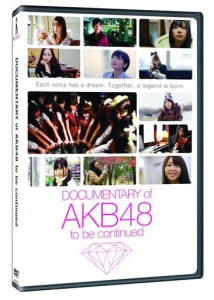
“It’s genius, really. This documentary takes some of the more popular girls and puts them under the lens and attempts to find out what they really want out of this and, please, could you prance around in a short skirt while we ask?” (NEW PEOPLE ENTERTAINMENT)
The Challenger Akihabara Deep—going where no otaku has gone before: The AKB48 Trench
By Rick Ambrosio (Ibaraki-ken, 2006-08) for JQ magazine. Rick manages the JET Alumni Association of New York (JETAANY)’s Twitter page and is the creator of the JETwit column Tadaima!
So, Documentary of AKB48 to Be Continued.
Starting out, I knew very little about this group. (In fact, I am writing this first paragraph before I watch this documentary.) So what do I know? I know it’s a troupe of pretty girls singing in unison to the joy of fans all over Japan. I know there are a lot of them. And they have songs. That’s…well, that’s really it. In the universe of girl groups, the only others that really come to mind are the Spice Girls and Girls’ Generation, and I only know the latter because my girlfriend really liked the jeans they wore in a video.
Before we start, you should know that getting a DVD like this is rare. The only place to pick this up is at http://store.newpeopleworld.com. No Amazon, no Right Stuf. So when handed a review copy of this disc, I knew this was something special, but I also knew I had it wrong. A hard-to-find documentary? My hopes where over the moon. I was curious what the director and his team would discover about this group. Who secretly hates whom? Which one has substance abuse problems? Surely some scandal would come to light.
For starters, this documentary assumes you know a little bit about the group beforehand. This really is set up as more of a “behind the scenes, get to know the girls” film than it is a structured presentation of their work. It allows you to get closer to the idols as people (or at least what is deemed appropriate, sadly) and see who these dancers are as they attempt to garner attention from an audience that ultimately decides their fate. The product here is really American Idol meets Japanese Pop Star, with the same emotional performances, reactions and judging of the American show mixed with the contemporary idol mania that has swept over Tokyo, Akihabara to be specific. It’s genius, really. This documentary takes some of the more popular girls and puts them under the lens and attempts to find out what they really want out of this and, please, could you prance around in a short skirt while we ask?
JQ Magazine: Japan Day @ Central Park Reels in the Crowds
By Alma Jennings (Fukushima-ken, 2008-10) for JQ magazine. Alma works at Japan Society in New York as a development assistant in foundation and government relations.
The sixth annual Japan Day @ Central Park took place on a warm Sunday May 13. Over 40,000 people attended the event, which featured live performances, Japanese games and language lessons, and the four-mile “Japan Run.” This year also marked the triumphant return of food tents, where volunteers dished out free sushi, udon, Pocky, and other Japanese vittles to hungry visitors.
According to their homepage, the goals of Japan Day are to build bridges of understanding between the people of Japan and the U.S., showcase the local Japanese community’s appreciation toward New York, and facilitate stronger grassroots connections within the local Japanese community. This year, the JET Alumni Association of New York (JETAANY) teamed up with Japan Society, a New York City-based organization that deepens understanding between the U.S. and Japan, to offer traditional Japanese “yo-yo fishing.” In this addictive game, participants try to win a colorful balloon by using a paper hook to lift it from a pool of water. Volunteers from the Japan Local Government Center, Mitsubishi, K Line Logistics, Mirai IT International, and the Bronx Science Key Club also provided much appreciated help at the tent.
The cute yo-yos look deceptively easy to make. In fact, they are tricky to make and can get messy. Volunteers showed up hours before the event began to blow up the balloons, which tend to deflate over a few days and thus couldn’t be made in advance. Japan Society’s director of special events and JET alum Christy Jones (Nagasaki-ken, 1995-98) served as the yo-yo activity organizer on behalf of the Society, encouraging Japan Society’s staff and JET alums to prepare thousands of paper hooks before the big day.
JQ Magazine: JQ&A with Director Regge Life on ‘Live Your Dream: The Taylor Anderson Story’

“‘Live Your Dream’ is principally about Taylor, but it is actually the story of all the JETs who come to Japan, so I really want to look at what the experience is for a variety of people and how that experience changes both the teacher and the students they interact with.”
By Renay Loper (Iwate-ken, 2006-07) for JQ magazine. Renay is a freelance writer and associate program officer at the Japan Foundation Center for Global Partnership. Visit her blog at Atlas in Her Hand.
Live Your Dream: The Taylor Anderson Story is the latest work by filmmaker and Global Film Network founder Regge Life, who has been making groundbreaking films for over two decades including the acclaimed Doubles: Japan and America’s Intercultural Children, and most recently Reason to Hope, which chronicles the events surrounding the 2010 Haiti earthquake. Live Your Dream not only shares the story of JET alum Taylor Anderson (Miyagi-ken, 2008-11) who tragically lost her life in the 2011 tsunami, but it also seeks to celebrate the lives of those who live their dreams and inspire others to make a difference. JQ caught up with Life to discuss the film, which is being prepared for a November release.
Your relationship with Japan spans over two decades. What stirred you to first go there, and how has this relationship grown over time?
This is a question with a very long answer, so let me try to be brief and to the point as possible. Japanese film has always intrigued me, so as a young filmmaker I would watch marathons of Japanese films at a cinema on Eighth Avenue called the Elgin. After years and so many movies, I was introduced to the Creative Artists Program of the NEA and Bunka-cho, and that is how I went the first time to witness the making of Tora-san #43.
How has it grown? Well, leaps and bounds. Four completed films, almost four years in residence in Tokyo, and a current feature project in development for almost 10 years.
What inspired you to make this film and document Taylor’s story?
Like most people, watching what was happening [during the time of the tsunami and earthquake] was mind-boggling and devastating. I have never been to Ishinomaki before, but I have been to Hachinohe, Morioka, Ichinoseki, and other parts of the region; so when I saw water rushing over rice fields like that and trucks and cars being carried—I just couldn’t believe it. It was devastating [to watch] for someone who has never been there before, but when you have been there, you [can better understand] the magnitude of what was happening. So at that time I’d just finished the film about Haiti, and from my work there, I realized there was probably going to be a story that needed to be told: something that no one would cover.
I don’t remember where I saw the fist e-mail about Taylor’s story or how it came to be, I just remember reading about her online. I made a few calls and one thing lead to the next, and slowly but surely, I was able to get in touch with Taylor’s family. And even still, it was all about timing. As a parent, I would have completely understood if no one got back to me. Then suddenly, I got this email from Andy, Taylor’s father. Giving him credit, he did his due diligence and did some research on me and became familiar with my work. [This all happened] at a time when they were swarmed by the media, so I took my time and we worked as they were comfortable.
Every step of the way, I checked in. Andy connected me with some of Taylor’s friends from Ishinomaki, so when I went back to Japan, I carved out some time to spend with them. One of her friends picked me up from the train station and that’s when it really hit me. At that time [the devastated area] was pretty much cleaned up—but even still, there was a lot to be done. Visiting Ishinomaki and meeting [Taylor’s] friends solidified it with me. I knew I needed to share her story.
Since this is a documentary about a JET participant, what cooperation did you receive from JET Program itself for the making of the film?
The CLAIR office in Japan was very generous to the film and made a remarkable pledge. We also received support directly from one of the people on staff! The JET alumni chapter in New York City (JETAANY) was also very generous, as well as JETs from all over the U.S. and even abroad.
JQ Magazine: Book Review – ‘Project Japan: Metabolism Talks’
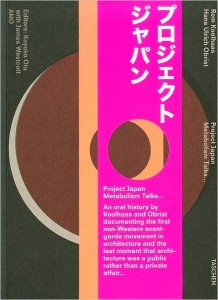
"What’s most striking about 'Project Japan' is the text itself, a frenetic landscape of drawings, photographs and textual tidbits both fluid and choppy. The book is also a portrait of a moment; once futuristic, now historical, yet still as influential as ever." (Taschen America)
By Sharona Moskowitz (Fukuoka-ken, 2000-01) for JQ magazine. Sharona is interested in fresh, new voices in fiction and creative nonfiction.
What does it mean to be a Japanese architect, and is this distinction even worth making? According to Rem Koolhaas, the legendary architect and co-author of the book Project Japan: Metabolism Talks, the answer is unequivocally yes. As he puts it, “The Japanese are a group of modernists that never entirely cut connections with the past. That is probably still something one intuitively senses when they look at Japanese architecture.”
Project Japan (co-written with Hans Ulrich Obrist) offers a documentary-style look at the avant-garde Metabolism movement that flourished in Japan after World War II. While the country was recovering from the war and reinventing its image, the Metabolists strived to make architecture “a public rather than a private affair,” designing for a widescale shift from the rural to the urban.
What’s most striking about Project Japan is the text itself, a frenetic landscape of drawings, photographs and textual tidbits both fluid and choppy. It’s essentially a reference book, reading like a series of presentations whose format begs audience interaction. The book offers an intimate glimpse into the lives of the men responsible for propelling the movement forward and the processes involved. The book is also a portrait of a moment; once futuristic, now historical, yet still as influential as ever.
JQ Magazine: Petals Underfoot at Brooklyn’s Sakura Matsuri
By Preston Hatfield (Yamanashi-ken, 2009-10) for JQ magazine. Preston moved from San Francisco to New York City in January 2012 and is now accepting submissions from people who want to be his friend. Abduct him from his house in the middle of the night, or find him on Facebook and ask about his JET blog in which he details his exploits and misadventures in that crazy Land of the Rising Sun we all love.
In the end I find myself in Cherry Esplanade, sinking to the ground, my back comfortable against the broad face of a cherry tree whose gnarled and mostly barren branches still sported a few late blossoms flitting in the breeze, the petals of those that had come before it strewn across the grounds, specking the meadow in gentle shades of pink. It’s an act of defeat, really; an act of resignation.
I never did find that damn press table.
* * *
I arrived early, as planned, eager to take in the 31st Annual Sakura Matsuri at the Brooklyn Botanic Garden. It was my first matsuri since moving to New York in January, my first trip to the Garden. I was stoked.
As instructed, I went to the entrance designated for performers, event staff and press and told the man at the front desk who I was. After consulting his clipboard and giving me a skeptical look, he let me in and gave me directions to the tent where I could pick up my press kit and thank the publicist for giving JQ magazine and myself the opportunity to cover the event. I set off, and once inside was instantly struck by how large the Brooklyn Botanic Garden really is. Droves of people had shown up for the event, a fair number of them in costume, though conspicuously, from where I stood just outside the visitor center, it was not readily apparent where the main event was being held. As I continued walking down the path, I was growing more and more sure that either the guy at the front desk either gave me poor instructions, or I was poor at following them (and this would not surprise most people who know me, least of all my mom or some of my elementary school arts and crafts teachers).
Leave it to me to let this bother me, to knock impatiently at the door of my mind so loudly that I was unable to really take in and appreciate my surroundings. Find the press table. That is the first priority. Enjoying myself can come later.
JQ Magazine: JQ&A with JET Alum Kalu ‘Kaz’ Obuka of Meta-Culture
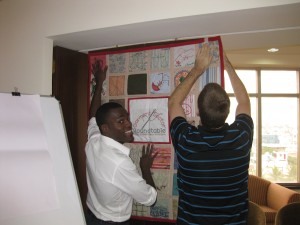
"My time on JET bolstered my thinking that we need better institutions and processes for dealing with difference. To its credit, the prefecture I worked in was definitely ahead of the curve."
By Renay Loper (Iwate-ken, 2006-07) for JQ magazine. Renay is a freelance writer and associate program officer at the Japan Foundation Center for Global Partnership. Visit her blog at Atlas in Her Hand.
Originally from London, Kalu “Kaz” Obuka (Saitama-ken, 2005-08) is currently working as a conflict resolution specialist at Meta-Culture, a conflict resolution NGO in Bangalore, India. Having a unique career fueled by his graduate studies in Coexistence and Conflict at Brandeis University paired with his time on JET, Kaz spent a little time with us to share more.
How did your time on JET influence your decision to take up your particular course of study?
My time on JET bolstered my thinking that we need better institutions and processes for dealing with difference. I think it was seeing the way that the institutions I worked with were absolutely out of their depth when, for example, it came to dealing with pupils with migratory backgrounds. To its credit, the prefecture I worked in was definitely ahead of the curve, and was actively looking to develop mechanisms and services for immigrants to help them navigate what, in some cases, would be a very alien cultural landscape.
Aside from immigration, it was seeing the way politics played out, especially the posturing with which the Japanese and their neighbors engaged one another, and their history.
How did your JET experience help you to secure your position at Meta-Culture?
I think my JET experience helped me to the extent that it bolstered my desire to enter the conflict resolution and consensus building field.
What fields did you work in prior to JET?
Prior to JET I dabbled in the NGO sector with an organization that worked to empower disadvantaged youth in London, as well as PR and some professional modeling.


